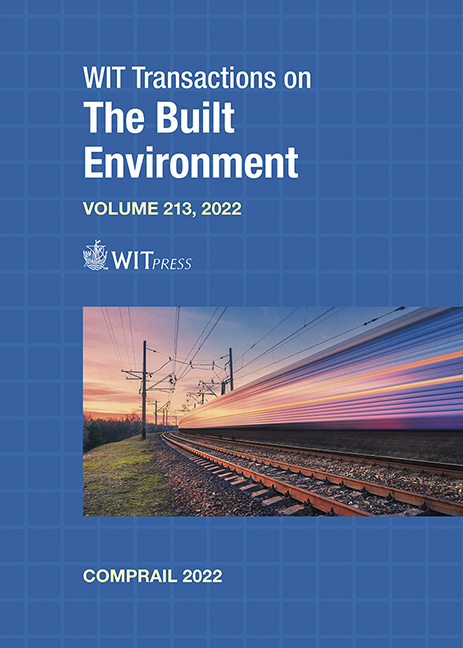WEATHER AND TRAIN DISRUPTIONS IN SWEDEN, 2011–2019
Price
Free (open access)
Transaction
Volume
213
Pages
8
Page Range
113 - 120
Published
2022
Paper DOI
10.2495/CR220101
Copyright
Author(s)
MICHELLE OCHSNER, CARL-WILLIAM PALMQVIST
Abstract
The impacts of adverse weather conditions on railway systems can lead to large delays and cancellations across the entire network. In this paper, we aim to understand the relationship between weather and train disruptions (i.e. cancellations and large delays) across the entire Swedish railway network for the years 2011–2019. Using railway operations data and snow depth, temperature, precipitation, and wind data aggregated on a weekly level, we use visual graphical analysis to understand this relationship. The results indicate that the disruption shares increase with higher amounts of snow and rainfall, and wind speeds. Results show that disruptions increase dramatically both at cold temperatures, with high snow depths, and at high wind speeds. High temperatures and precipitation levels also correlate with increased disruptions, but less dramatically. With projected increases in temperatures and precipitation due to climate change, and an increased frequency of storms, some of these relationships are expected to become more significant, while winter-related problems are likely to decrease. The results highlight the importance of increasing the resilience of railways to adverse weather conditions and the need for appropriate adaptation strategies.
Keywords
extreme weather, temperature, precipitation, snow, wind, railway, disruptions





